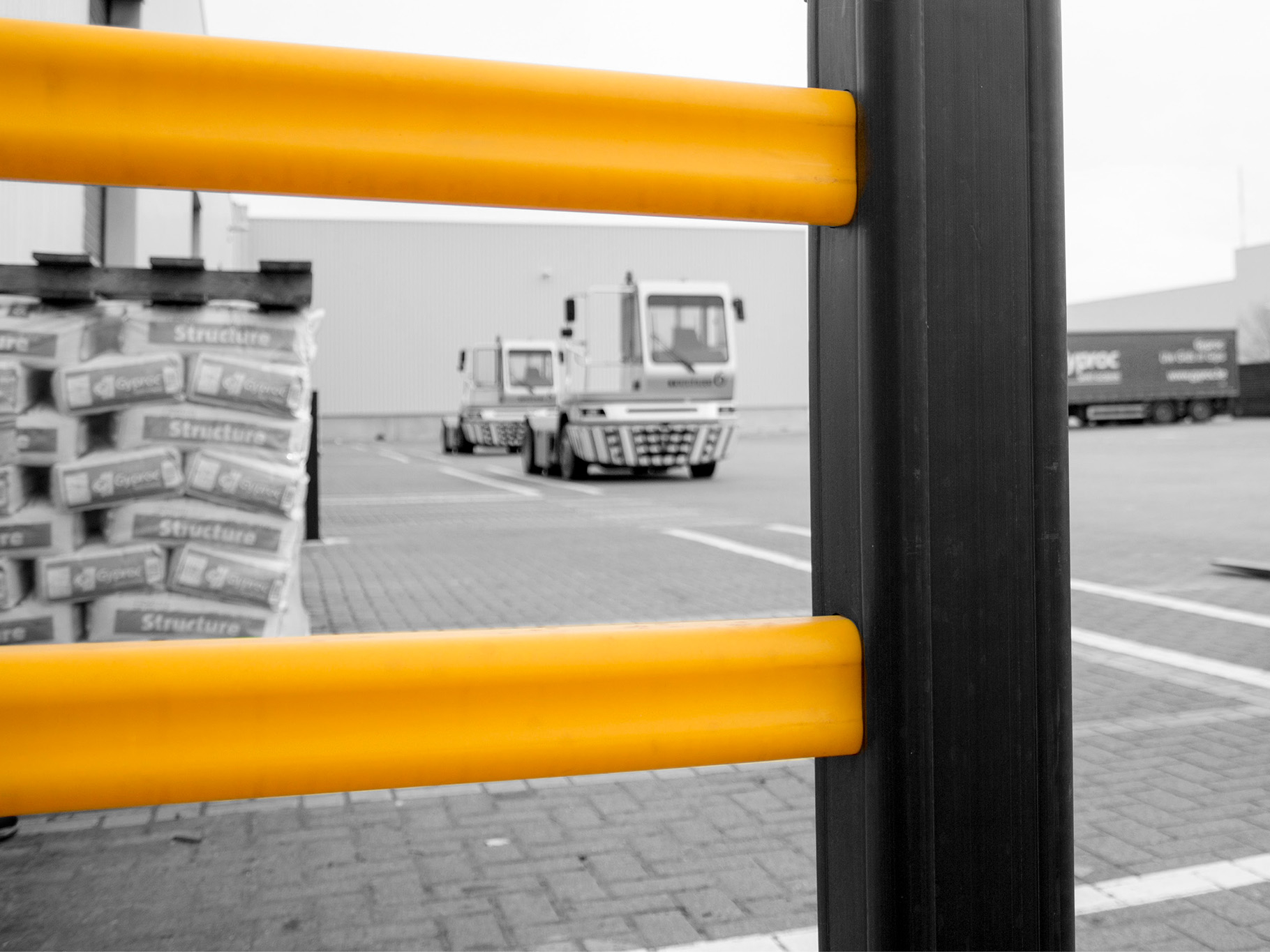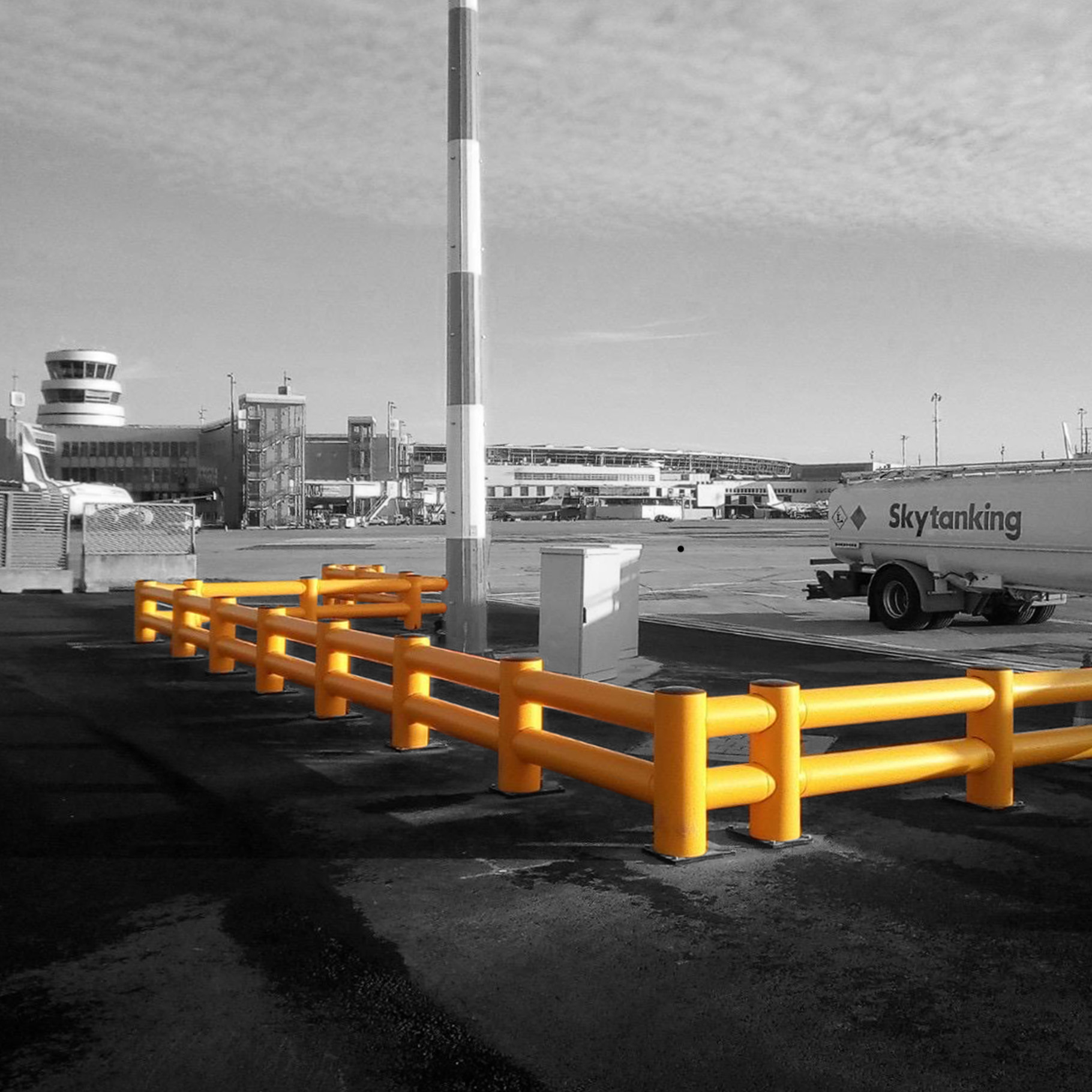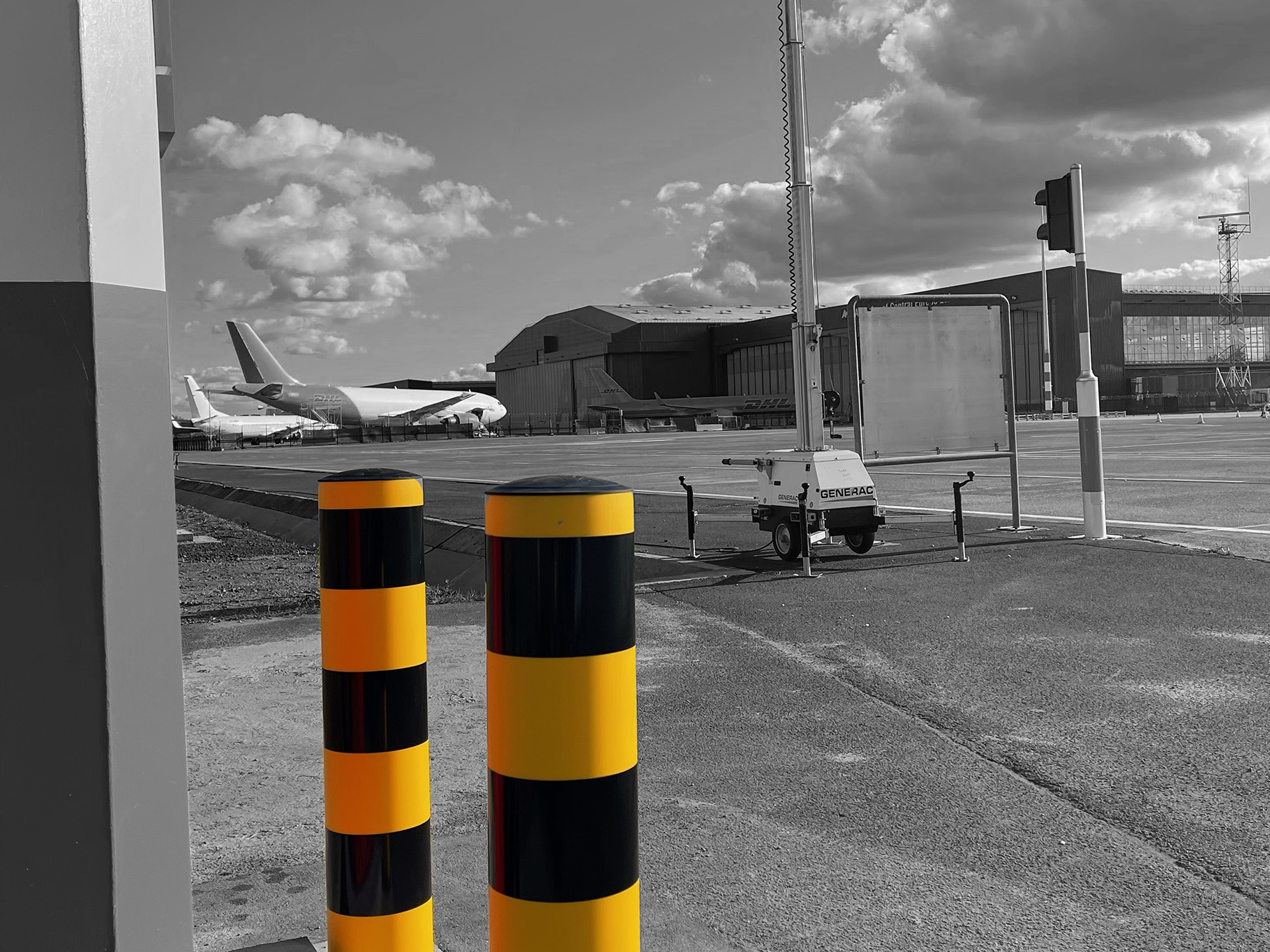Six risks for airports ground staff
Airports are usually very busy. This is true for both the passengers and the people who work there. Ground staff must be well-trained and always alert. Despite this high workload, everyone’s safety must be ensured.
But how dangerous is it actually to work at an airport? Here is an overview of the most common risks to ground staff. If you think your staff needs additional safety measures, read on.
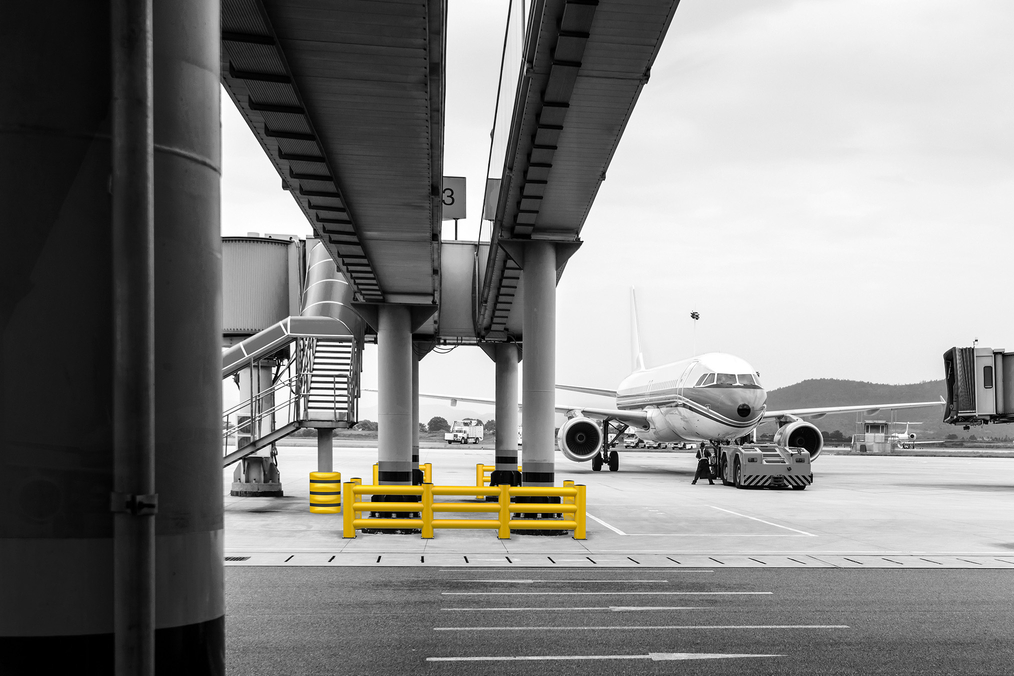
Every gallon counts
A standard passenger aircraft consumes an average of a quarter gallon (approximately 1 liter) of fuel per second. A ten-hour flight therefore uses around 9,000 gallons (36,000 liters) of fuel. And where is all this fuel stored? Naturally, in the fuel tank. During peak summer and winter periods, fuel truck accidents can happen alarmingly quickly due to time constraints.
FLEX IMPACT® airport safety solutions mitigate damage when incidents occur. Thanks to their flexible design, they can easily adapt to new situations or be moved to other locations at the airport. The striking color and presence of the safety barrier alert drivers that they are approaching an area where extra caution is required.
The safety barrier is constructed from a durable, highly shock-resistant polymer. In the event of a collision, the released force is distributed across the barrier, reducing the vehicle's impact energy. This increases the safety of everyone involved, including pedestrians and vehicles.
Carry-on luggage only?
Baggage handlers are a familiar sight at airports. They play an essential role.
The heavy work often takes its toll on the staff, causing stretched muscles, joint problems, and even a risk of arthritis. Airport ground staff must be familiar with the correct lifting techniques to prevent injuries. Regular risk assessments are necessary to ensure all staff are aware and working safely. Numerous posters and signs are displayed around the airport to inform everyone.
Ground-level hazards
Working on the tarmac near aircraft and fuel tanks is always impressive. So impressive, it might make people feel unsafe.
The presence of industrial safety handrails increases ground staff's sense of safety. These barriers can be installed everywhere: in buildings near the runway and in areas such as restrooms and staff canteens.
Safety barriers are just the first step. Staff are also required to closely follow the airport’s health and safety protocols. This helps reduce the risk of dangerous scenarios. Simple measures such as high-visibility vests ensure that staff are always visible to those who need to see them. Combining standard training sessions and protocols with proper safety barriers achieves a high level of safety and, more importantly, risk prevention.
Protect your fleet
Vehicles used on airport premises require a lot of care and attention. They need to be efficient, and drivers must ensure there are no mechanical problems.
Another critical factor to consider is how and where they park. A clearly marked parking space for airport vehicles reduces the risk of collisions and accidents. When you combine this with robust safety barriers, you create an impenetrable shield between your critical fleet and any impending danger. Airport safety is crucial. Everyone traveling through an airport deserves to feel safe, whether they are staff members or travelers.
Remember that with every airport accident, repair costs increase. Safety barriers play a crucial role in reducing unwanted expenses. The pressure on airport staff is already high, so if you support them and ensure their safety, it will benefit the staff, their vehicles, and the airport.
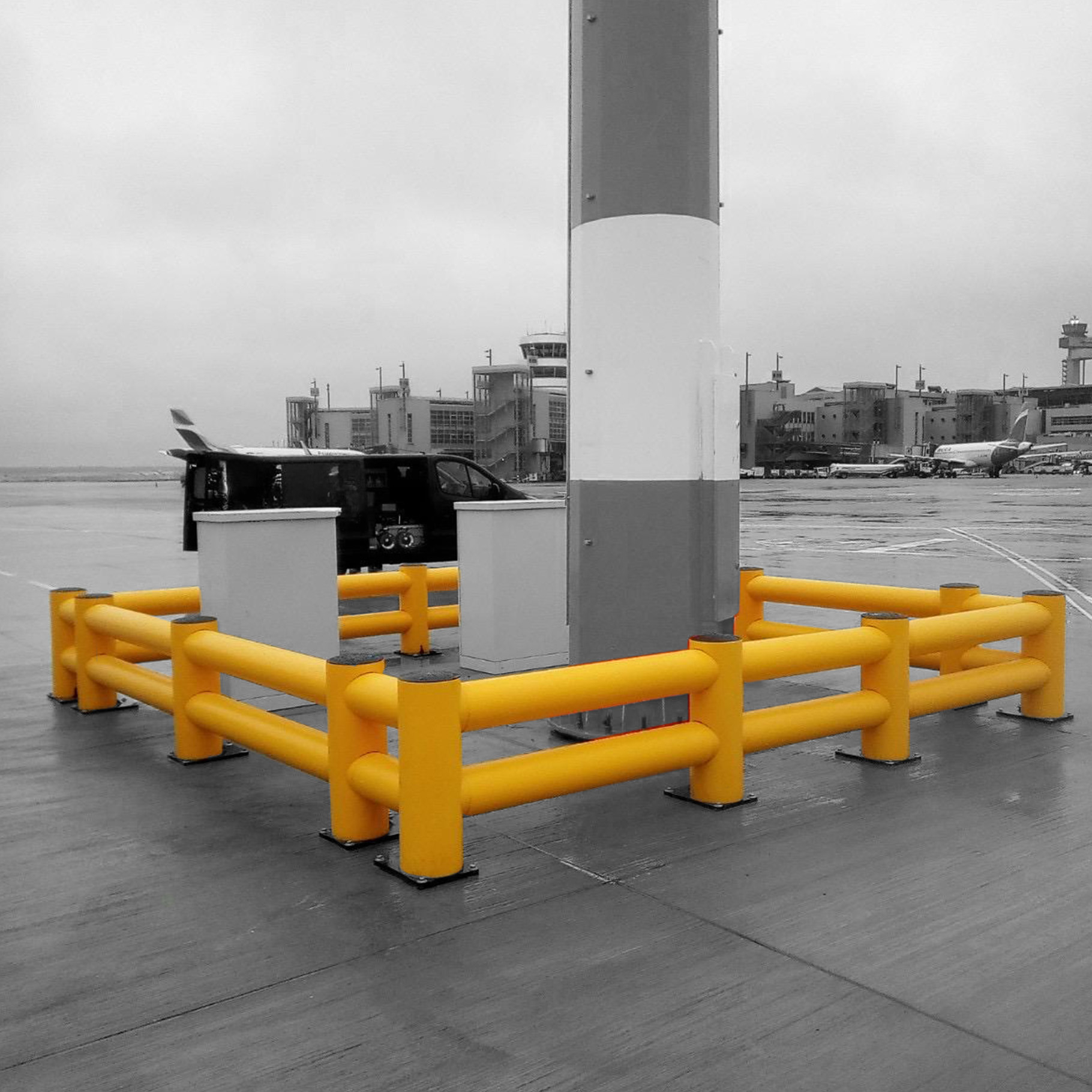
A solid foundation
BOPLAN® FLEX IMPACT® safety barriers offer a range of benefits at airports. The safety barriers, mounted on solid base plates, are a very smart investment.
As previously mentioned, the energy released in a collision is distributed across the entire barrier. The force does not rebound to the source of the accident, and the base plates remain in place, firmly anchored to the ground. This is very different from conventional steel barriers, whose base plates tend to come loose with almost any impact, damaging the floor in the process. Steel guardrails are also left with dents and damage the vehicle. If you take all this into account, it adds up.
A safety barrier as strong and flexible as FLEX IMPACT® is a better choice. The safety barrier’s ability to retain its look and color, and more importantly, regain its shape after a collision, means you can rest assured. With frequent repairs kept to a minimum, these barriers remain operational year-round.
Rigorous testing
All our products are tested externally at the Transpolis Laboratory before they get certified. Dr. Edmondo di Pasquale from Princeton University leads the lab research. He and his team have extensive crash testing experience. This means that anyone who invests in our products gets value for their money.
Safety upgrade
If you want to invest in airport safety barriers, get in touch with Boplan today. Our extensive catalog of safety measures shows there is no limit to what or who you can protect from potentially dangerous situations.
Remember that airports are incredibly busy, and the atmosphere is highly stressful at best. Danger is present at every turn. Ensure your airport is well-prepared and protected against potential collisions, so all staff members and passengers feel comfortable.
